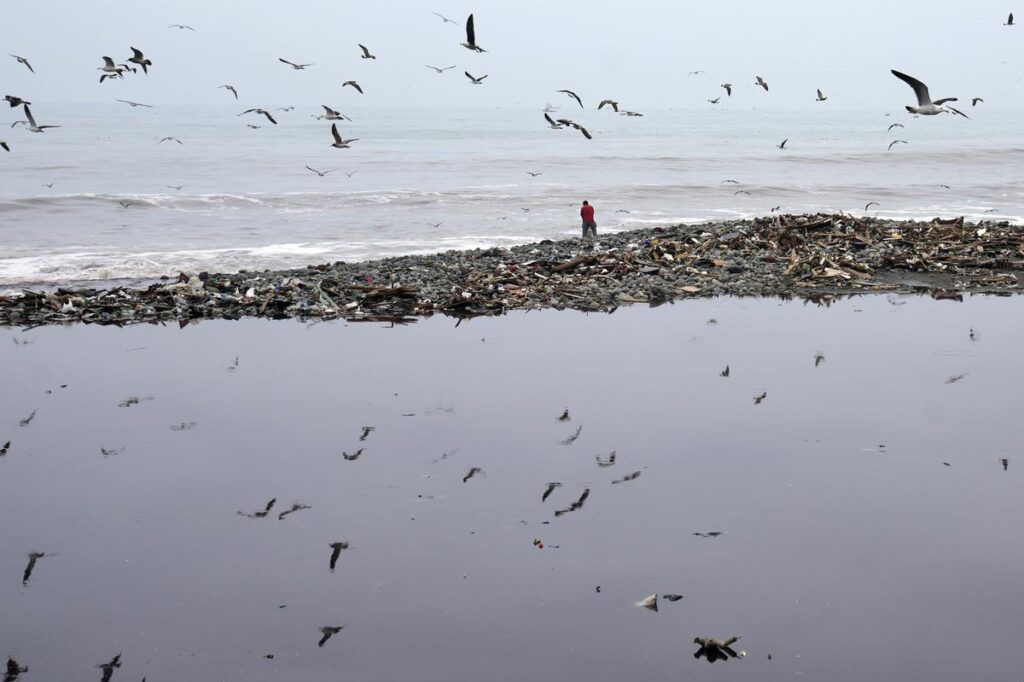
1. United Nations: Small Islands Take Ocean Protection Case to UN Court
The United Nations maritime court will hear a landmark case brought by a group of small island states seeking protection of the world’s oceans from catastrophic climate change. The nine island states have turned to the International Tribunal for the Law of the Sea to determine if carbon dioxide emissions absorbed by the oceans can be considered pollution, and if so, what obligations countries have to prevent it.
Ocean ecosystems limit global warming by absorbing much of the carbon dioxide emitted by human activities. However, increasing emissions can warm and acidify seawaters, harming marine life. The push for climate justice won a big boost when the UN General Assembly in March adopted a resolution calling on the International Court of Justice to lay out nations’ obligations on protecting Earth’s climate and the legal consequences they face if they fail to do so.
Thank you for your generous gift that will help us continue the production of this weekly, free publication
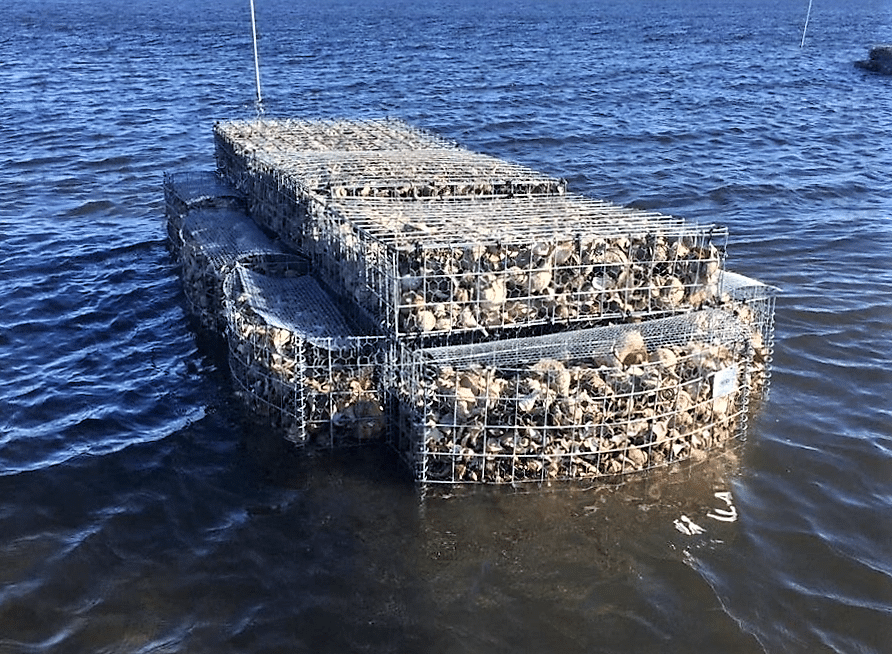
2. Oysters at Work: Cleaning Water, Preventing Erosion, Helping Marine Life
When you think of “mighty” animals, a few that may come to mind are lions, tigers, and bears (oh my!). The oyster is probably at the bottom of the list. But did you know that one adult oyster can clean 50 gallons of contaminated water a day? And that colonies of oysters, growing together to form a reef, can protect bayside shorelines from storm erosion and provide habitat for a multitude of other species?
Oysters may not be physically imposing, but they’re mighty in their impact on the marine environment! That’s why oyster restoration projects in Raritan Bay, Delaware Bay, and Barnegat Bay are gaining in popularity. Millions and millions of oysters have been introduced in recent years by the American Littoral Society, the NY/NJ Baykeeper, and their partners.
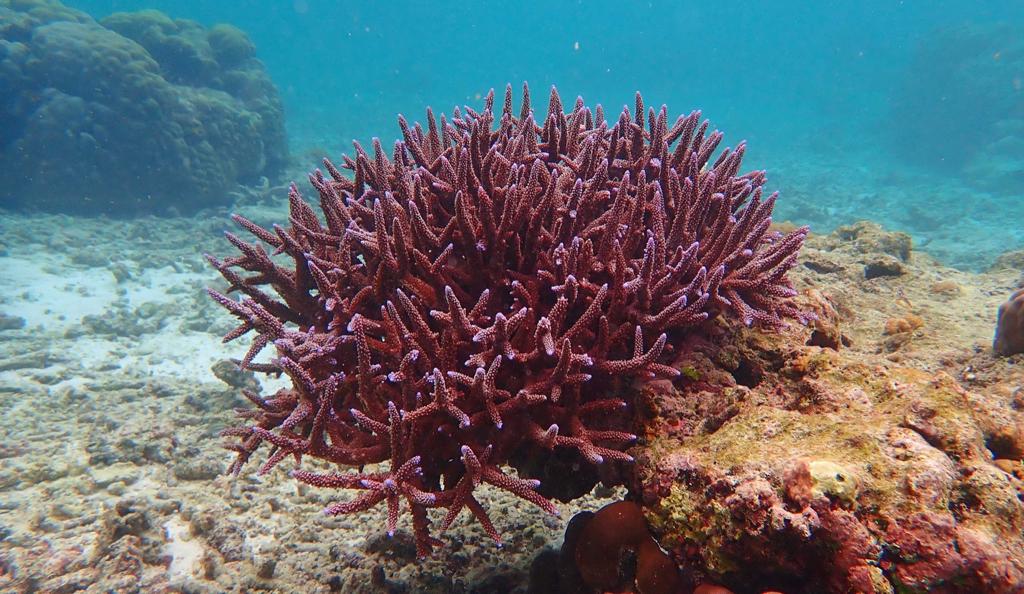
3. United Nations – India’s Top Priorities to Protect Its Marine Biodiversity Presented at UN
Research findings of the ICAR-Central Marine Fisheries Research Institute (CMFRI) were showcased as India’s commitment to conserving its marine ecosystems at a United Nations meeting held in Seoul, South Korea to discuss the Global Biodiversity Framework. Conservation of mangroves and coral reef ecosystems, identification of marine protected areas, and promotion of sustainable marine fishing were emphasised as India’s foremost national priorities at the Sustainable Ocean Initiative (SOI) workshop.
The meeting was organised to discuss means and approaches to accelerate the implementation of the Kunming-Montreal Global Biodiversity Framework of the UN Convention on Biological Diversity. The SOI is a global platform that aims to build partnerships and enhance capacity to achieve global goals and targets on marine and coastal biodiversity.
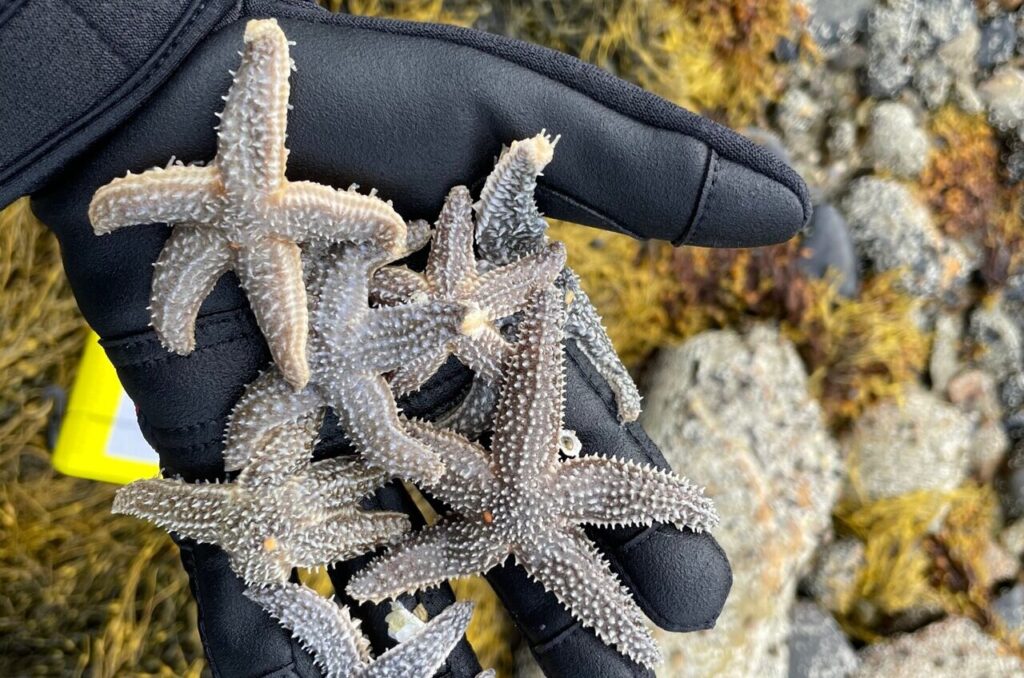
4. Evidence of Sea Star Species Hybridization Discovered
Scientists have suspected two species of sea stars—commonly referred to as starfish—along rocky European and North American coastlines of crossbreeding in the cool waters of the North Atlantic Ocean. According to recently analyzed genomic data, hybrid starfish are living and thriving, from the shores of New England to the Canadian Maritimes. A study presents genomic evidence of hybridization between two closely related species of sea stars– Asterias rubens, the common starfish, and Asterias forbesi, known as Forbes’ sea star.
“It is the first genome-wide evidence of extensive hybridization in an ecologically important coastal species,” said author Melina Giakoumis. The study highlights the ecological importance of both sea stars, considered to be “keystone species” with significant impacts on surrounding marine communities. When they’re removed from their intertidal communities—the coastal zones between high and low tide—diversity among those entire ecosystems has been shown to collapse, Giakoumis said.
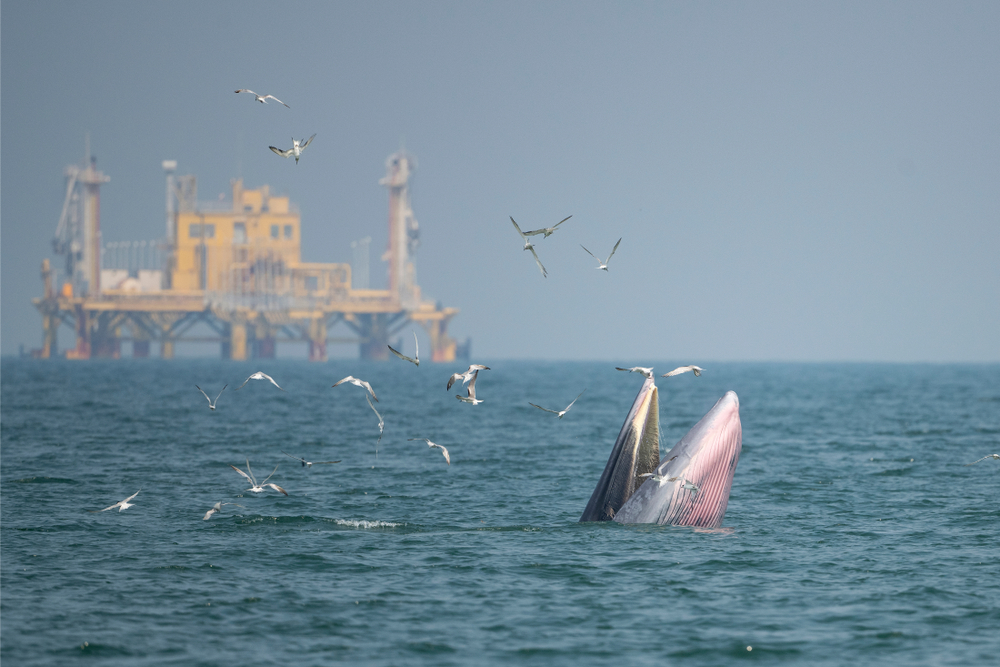
5. United Nations – Damping the Deafening Noise
Noise pollution in oceans has returned to the fore as an issue thanks to a recent United Nations report on this threat to marine life The report, released on World Ocean Day on 8 June, details three major ways human-created noise pollution is generated: shipping, primarily from engines and propellers; seismic airgun surveys used by the oil and gas industry to map the sea floor; and piledriving to install foundations for marine infrastructure such as offshore windfarms and oil rigs.
The lead author of the report, Dr Lindy Weilgart, a noise-pollution researcher at Canada’s Dalhousie University, says that although research has highlighted major problems, it’s also suggested some potentially simple fixes to significantly mitigate the scale of the problem. She told journalists that the report’s purpose was to focus not just on documenting the problems, but also to highlight solutions.
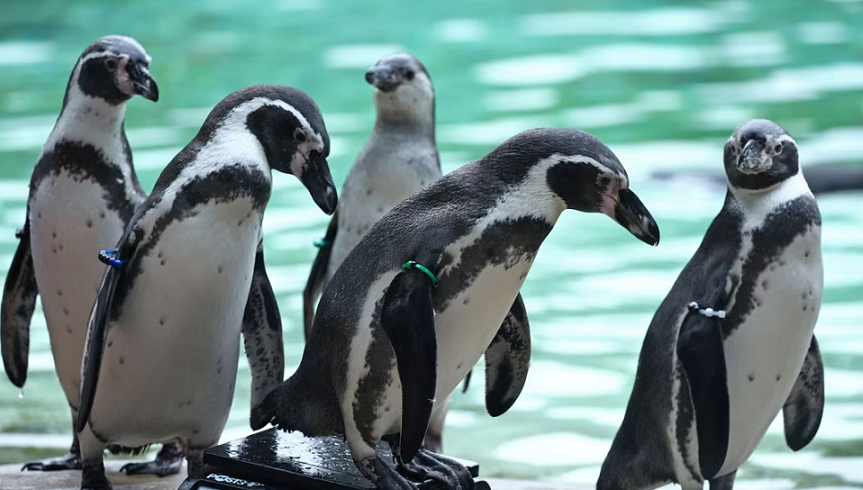
6. Penguins Are Dying in Warming Antarctic
The news of 10,000 young emperor penguin chicks dying in the Antarctic as the ground beneath their feet literally melted throws light yet again on how real and extensive global warming is. The young penguin chicks had not yet developed the waterproof coats required to swim in the ocean and were feared to have drowned or frozen to death. Emperor penguins need sea ice for their breeding cycle and a stable platform to raise their young.
Why are penguins important in the larger scheme of things? An Argentinian biologist renowned for his conservation work with penguins, wrote in the Smithsonian as early as 2014 about the important role penguins play in the ecosystem. He talked about how penguins carry nutrients between land and sea and how burrowing species modify the landscape. These elegant creatures are also huge draws for eco-tourism and help regional economies.
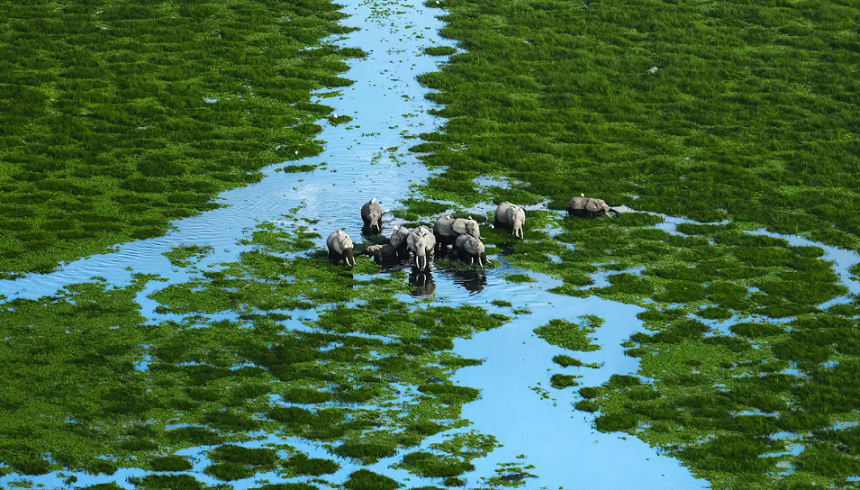
7. Nairobi Declaration – Nature and Biodiversity Are Solutions to Climate Change
The Africa Climate Summit (ACS) ended with nations acknowledging the value of nature and biodiversity for African development and as being vital for the fight against climate change. Azzedine Downes, President and CEO of IFAW, said the Nairobi Declaration announcement underscored biodiversity’s significance to arresting climate change.“The ACS decision is important. It commits members to strengthen their actions to halt and reverse biodiversity loss, deforestation, and desertification and restore degraded land.
Recognising the importance of these efforts is a vital step in the right direction,” said Downes, who was speaking from Nairobi.“The value of nature-based solutions as one of the ways to mitigate the climate crisis cannot be underestimated. We cannot afford to lament what has been lost; we must prioritise protecting what remains and actively seek ways to rectify the environmental damage so far inflicted upon our planet,” said the conservationist.
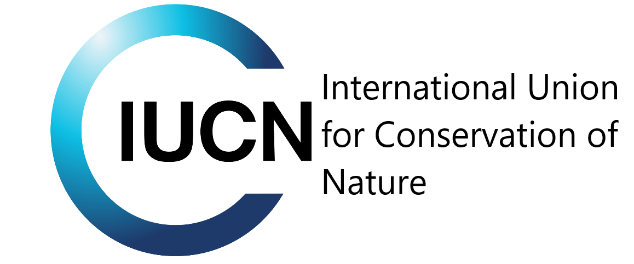
8. How the IUCN Helps Protect and Conserve
Protected and conserved areas are the foundation of biodiversity conservation. They safeguard nature and cultural resources, improve livelihoods, and drive sustainable development. IUCN works to establish best practices and standards that maximize the effectiveness of protected and conserved areas and advances justice and equity in conservation, including the rights of indigenous peoples and local communities.
Created in 1948, IUCN is now the world’s largest and most diverse environmental network, harnessing the knowledge, resources, and reach of our more than 1,400 Member organisations and 15,000 experts. This diversity and expertise make IUCN the global authority on the status of the natural world and the measures needed to safeguard it.
They provide a neutral space in which governments, NGOs, scientists, businesses, local communities, indigenous peoples’ organisations, and others can work together to solve environmental challenges and achieve sustainable development.
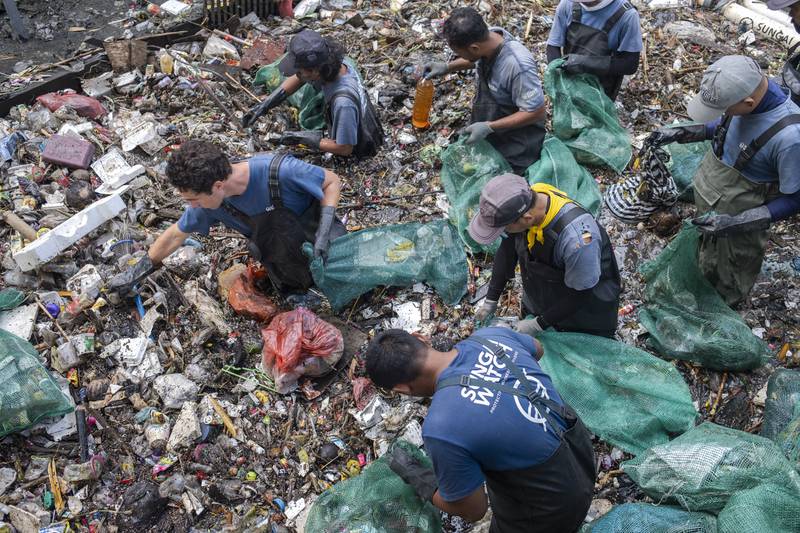
9. Advocates Push for Stronger Protection of Disappearing Irrawaddy Dolphins in Iloilo-Guimaras Straits
MANILA, Philippines — Conservation groups called for greater protection of the critically endangered Irrawaddy dolphin subpopulation in Iloilo and Guimaras Straits as they warned the extinction of these rare cetaceans will result in a significant loss of marine biodiversity in the area. There are only an estimated 10 to 13 individual Irrawaddy dolphins left in the area, and advocates fear the construction of a proposed bridge will lead to the disappearance of the subpopulation.
Advocates have been calling on the national government and local governments in Negros to declare the habitat of Irrawaddy dolphins as a marine protected area, establish no-boat or slow-boat zones and no-fishing areas, regulate fishing gears, and conduct regular monitoring of the species. They also call for livelihood support for fisherfolk who will be affected by the proposed MPA.
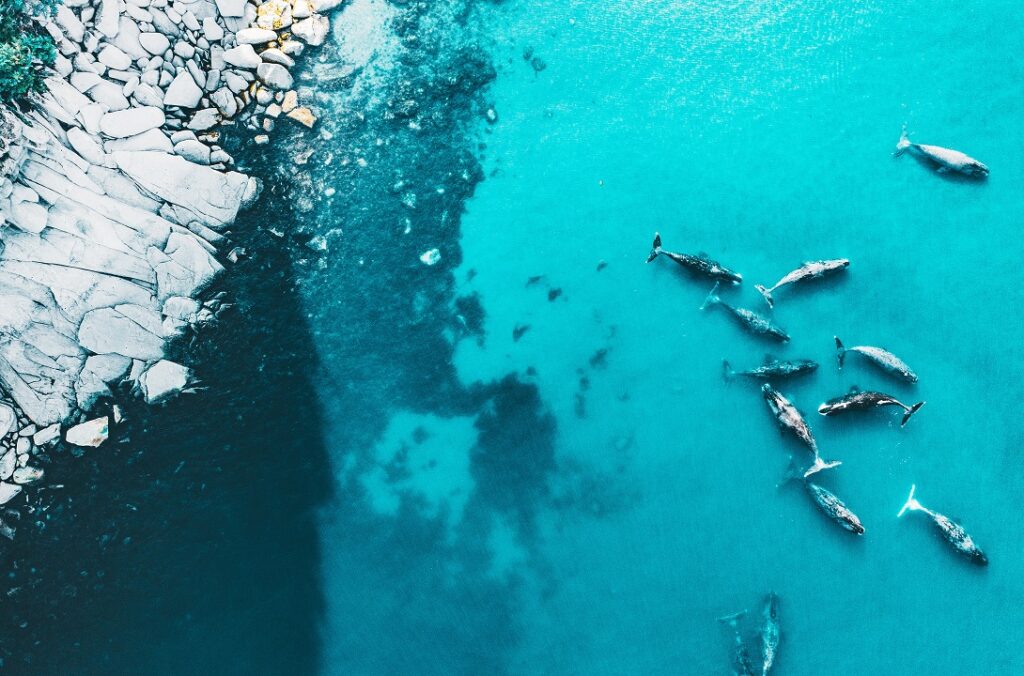
10. Where We Stand on Biodiversity Loss and Footprinting – BNP PARIBAS Asset Management
Robert-Alexandre Poujade the Biodiversity Lead at the Parabas Asset Management Group emphasizes the importance of biodiversity, our biodiversity roadmap, and the steps in assessing the biodiversity footprint of our portfolios. Why does biodiversity matter? Healthy functioning ecosystems underpin society: they produce the oxygen we breathe, help mitigate climate change, and support at least 55% of the global economy.
But about 25% of all species are at risk of extinction by 2050 – that is roughly one million species of plants and animals. Biodiversity loss threatens the achievement of UN Sustainable Development Goals related to poverty, hunger, health, water, cities, climate, oceans, and land, according to IPBES 2019. That is another reason to reverse the destruction of ecosystems and biodiversity loss. The remainder of the article will explore the following questions; What does this mean for investors? What can asset managers do? And, What next?
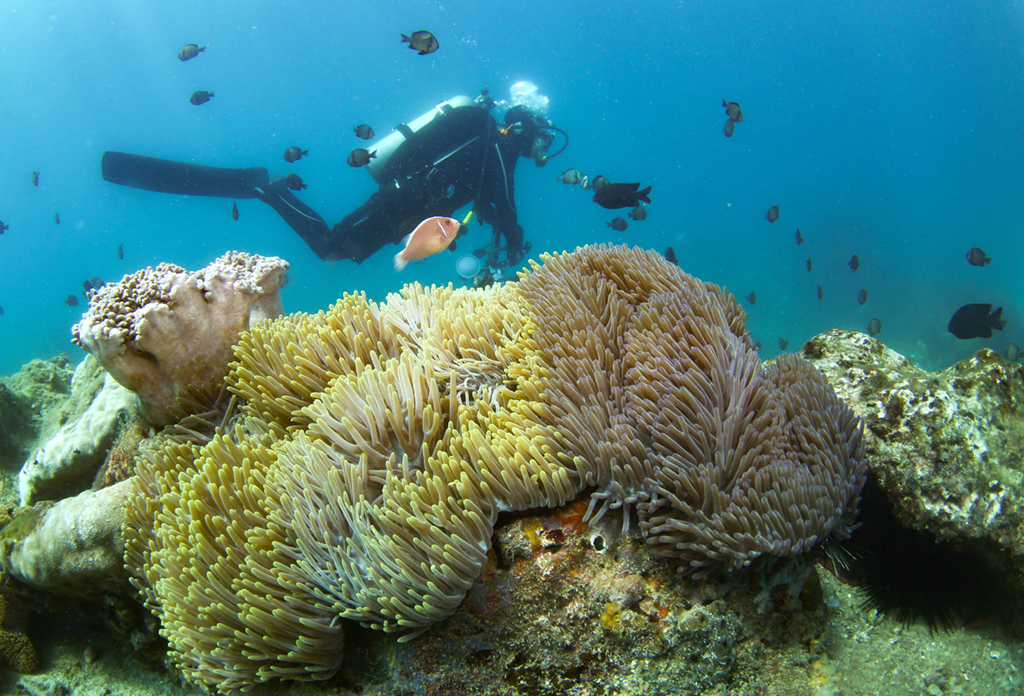
11. More Private Capital Urged for Marine Conservation – China
Experts have called for more policy efforts to draw private capital into marine conservation, as the country pushes ahead with the arduous task of repairing its damaged marine environment. Eco-environmental-oriented development has the potential to help address the problem. Known as EOD, the mode integrates lucrative business programs with environmental projects that yield few economic returns.
The gains from the lucrative businesses are invested in environmental programs to strike a balance between development and protection. A total of 52 prefecture-level coastal cities across the country have seen their marine economies boom over the past 10 years. The marine economy now represents about 9 percent of their overall GDP.. These cities need to boost economic development and enhance conservation in their 283 bay areas, which will offer a solid foundation to introduce eco-environmental-oriented development.

12. Seafood New Zealand Finds “Much To Like” In Green’s Oceans Policy, But Warns Against Misinformation
The group representing New Zealand’s commercial fishers has come out in support of some aspects of the Green Party’s oceans policy. But the organisation warns that other aspects misunderstand the science around oceans. Seafood New Zealand supports the idea of creating a special fund to help iwi and hapū deliver on marine conservation priorities and would like to see increased investment in biosecurity to protect New Zealand waters from invasive pest species.
It disagrees, however, that there is a “plunder of overfishing.” New Zealand’s oceans are tightly monitored, and its fisheries are healthy and well-managed. The trade group is also concerned that Green MPs want to ban trawling outright, which shows a misunderstanding of how this fishing method works. Done in the right way in the right places, it is not destructive and is in fact how the majority of fish are caught.
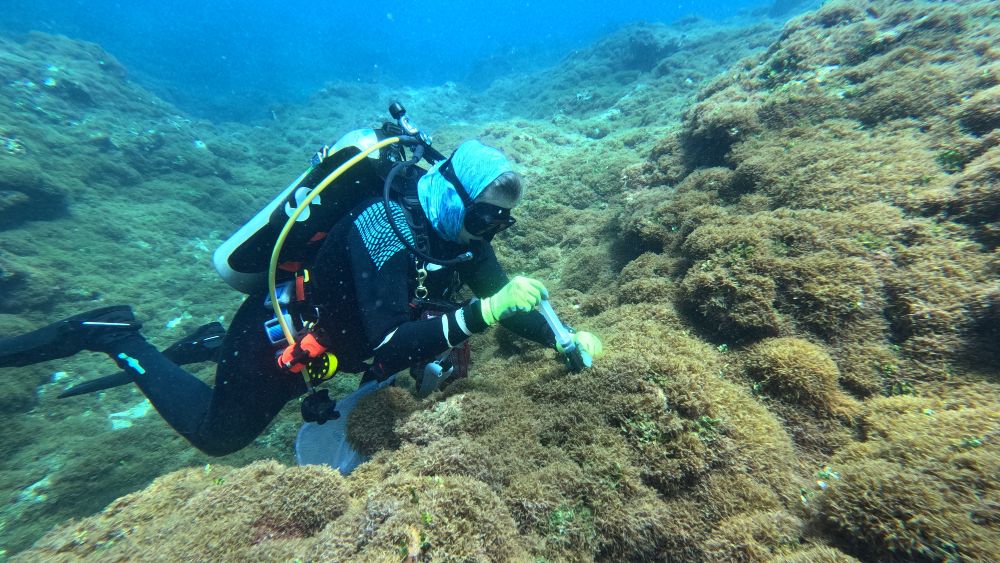
13. Nuisance Alga Spreading Rapidly in Hawai‘i
Scientists recently returned from a 23-day research expedition in Papahānaumokuākea Marine National Monument to study a mat-forming alga, Chondria tumulosa, that has invasive characteristics and is overgrowing some of the most pristine coral reefs in Hawai‘i.
Divers from the National Oceanic and Atmospheric Administration first detected the alga in 2016. By August 2019, the algae had grown into abundant mats of more than 100,000 square feet each at Manawai (Pearl and Hermes Atoll), outcompeting the species typically living in these ecosystems.
Chondria can form large, thick mats, which smother native corals and virtually all other organisms under the mats. The origin of this alga is a mystery and very little is known about its ecology, physiology or potential biological drivers. It was identified as a species new to science in 2020, and to date has only been observed in Papahānaumokuākea.
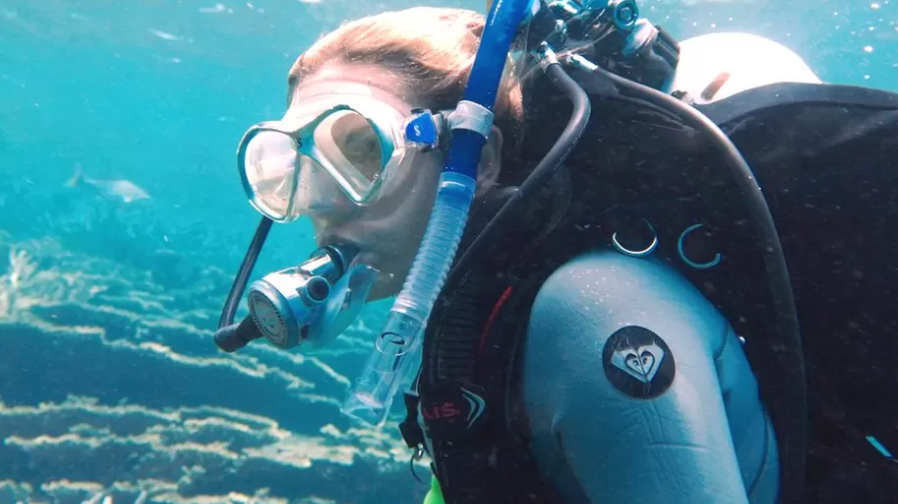
14. Robots Are Trained to Help Revive Coral Reefs
Coral reefs provide habitat to more than a quarter of marine species, but they have become vulnerable to disease and death as the oceans have warmed and become more acidic. Coral restoration efforts usually involve transplanting tiny corals, cultivated in nurseries, onto damaged reefs, but the work is slow and costly. In the shallow waters of the Abrolhos Islands, 40 miles west of Australia, a start-up firm and an engineering software firm are hoping to accelerate the process.
Their researchers have been training artificial intelligence to control collaborative robots (cobots), which work closely alongside humans. A robotic arm can graft coral fragments to the seed plugs. Another places them in the base, using vision systems to make decisions about how to grab it. The next step is to move the robots out of the lab, which should happen in the next 12-18 months.
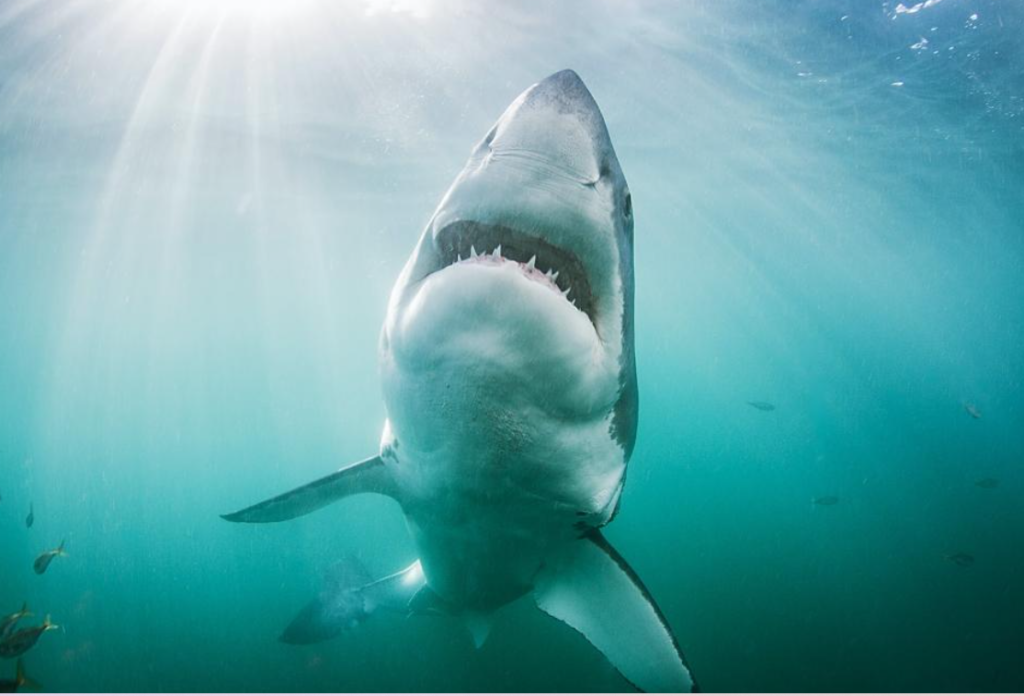
15. South Africa’s Great White Sharks Are Migrating to Survive. They Need to Be Monitored for Beach Safety and Conservation
South Africa is renowned for having one of the world’s biggest populations of great white sharks, but they haven’t been seen in places where they normally congregate to feed, interact socially, or rest. Marine biologists are studying whether the decline in shark numbers indicates changes in the whole South African population or whether the sharks have moved to a different location.
To investigate this problem, an extensive study examined the trends in shark populations and distribution. It found that white shark numbers remained constant since they were given protection in 1991, but discovered a shift in human-shark interactions from the Western Cape to the Eastern Cape. The stable population of white sharks is reassuring, but the distribution shift introduces its own challenges, such as the risk posed by fisheries and the need for beach management. So there is a need for better monitoring of where the sharks are.

16. Financing Our Survival
Between now and the end of this decade, climate-related investments need to increase by orders of magnitude to keep the world on track toward achieving even more ambitious targets by mid-century. Fortunately, if done right, such investments could usher in an entirely new and better economy.
These investments could usher in a new growth impetus for economies capable of meeting not only the Paris Climate Agreement’s targets but also the Sustainable Development Goals (SDGs). In a Finance for Climate Action, Research Institute report, we find spending on climate-related development goals will need to increase fourfold from its pre-pandemic levels by 2030 to address the problem.
Across emerging markets and developing economies other than China, that means spending $2.4 trillion per year (by the end of this decade) on three key objectives: transforming energy systems; building climate resilience; and supporting natural capital and sustainable agriculture.
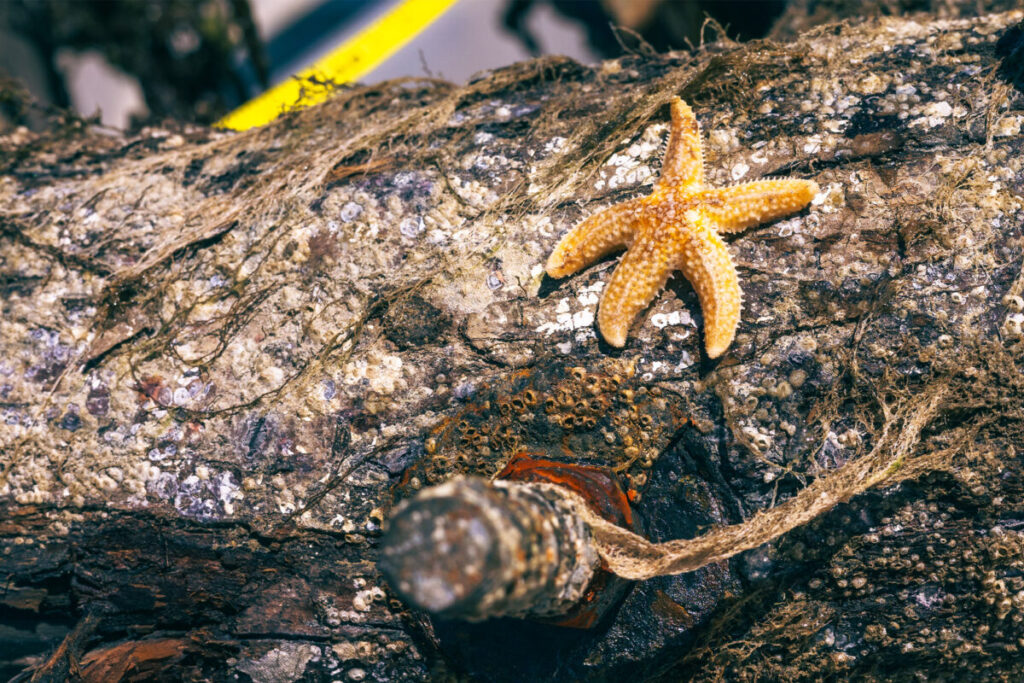
17. Study Finds Old Pear Trees Make for Surprisingly Rich Reef Habitats
In a study, researchers used old pear trees to create artificial reefs and settled them in the Wadden Sea in the Netherlands to see what kinds of marine biodiversity aggregated on or around them.
They found that the tree reefs attracted a surprising amount of biodiversity over a short period of time, including sessile organisms like barnacles and mobile species like fish and crabs. In a new paper published in Frontiers in Marine Science, researchers investigated the usefulness of pear trees as artificial reefs and their ability to attract marine biodiversity.
They constructed 32 pyramid-shaped “tree reefs” of six interconnected short-stemmed pear trees. Then they transported the tree reefs to the open waters between two Dutch barrier islands and settled them on the sandy bottom — about 3-4 meters (10-13 feet) deep — with concrete feet. After that, they waited…

18. In San Diego, Greenpeace Ship Hosts Film of Horrors, Targets Bumble Bee Seafoods
Greenpeace hosted a screening of the documentary “Before You Eat,” an indictment of Chinese fishing vessels abusing (sometimes fatally) Indonesian crew members and the system that allows it. A Greenpeace official acknowledged afterward that details in the film didn’t directly implicate Bumble Bee in the horrors shown — including a crew member’s burial at sea but that the film showed “symptoms of Bumble Bee issues.”
Bumble Bee, queried about the Greenpeace events, said in a statement: “Although we do not agree with many of the Greenpeace allegations, we do acknowledge that more progress is needed to ensure responsible labor practices are followed on all tuna vessels. The Bumble Bee Seafood Company continues to work within our supply chain, with others in the industry, and with the Seafood Task Force to advocate for the responsible recruitment and treatment of all workers and to reduce IUU fishing worldwide.”




